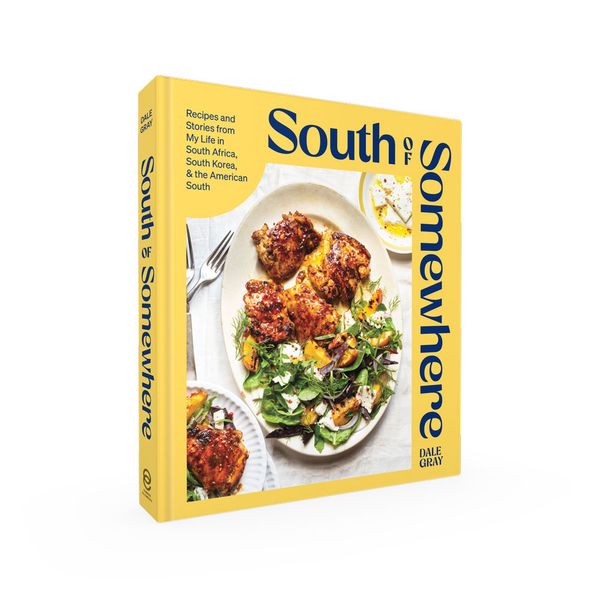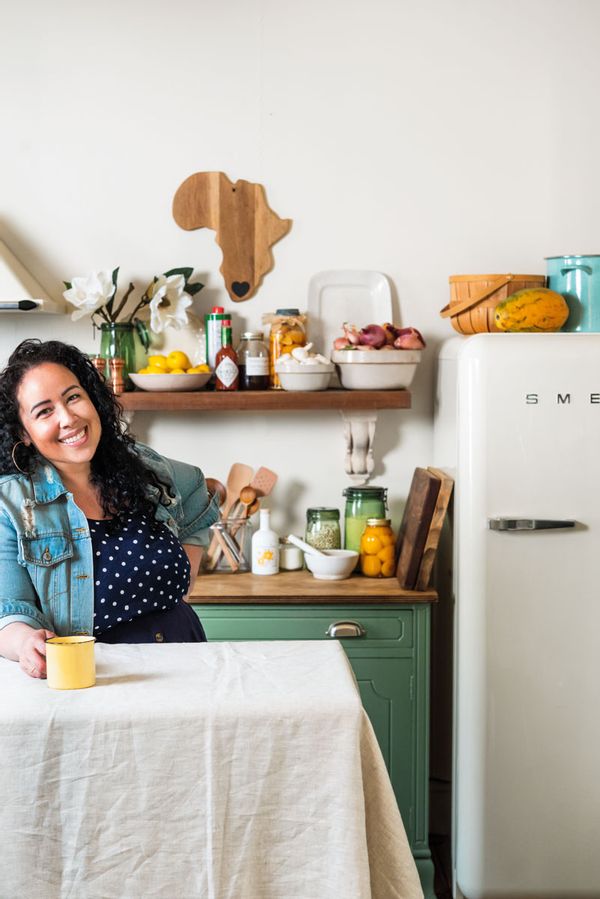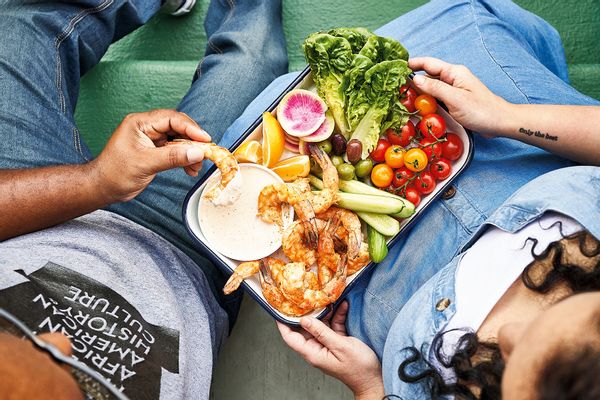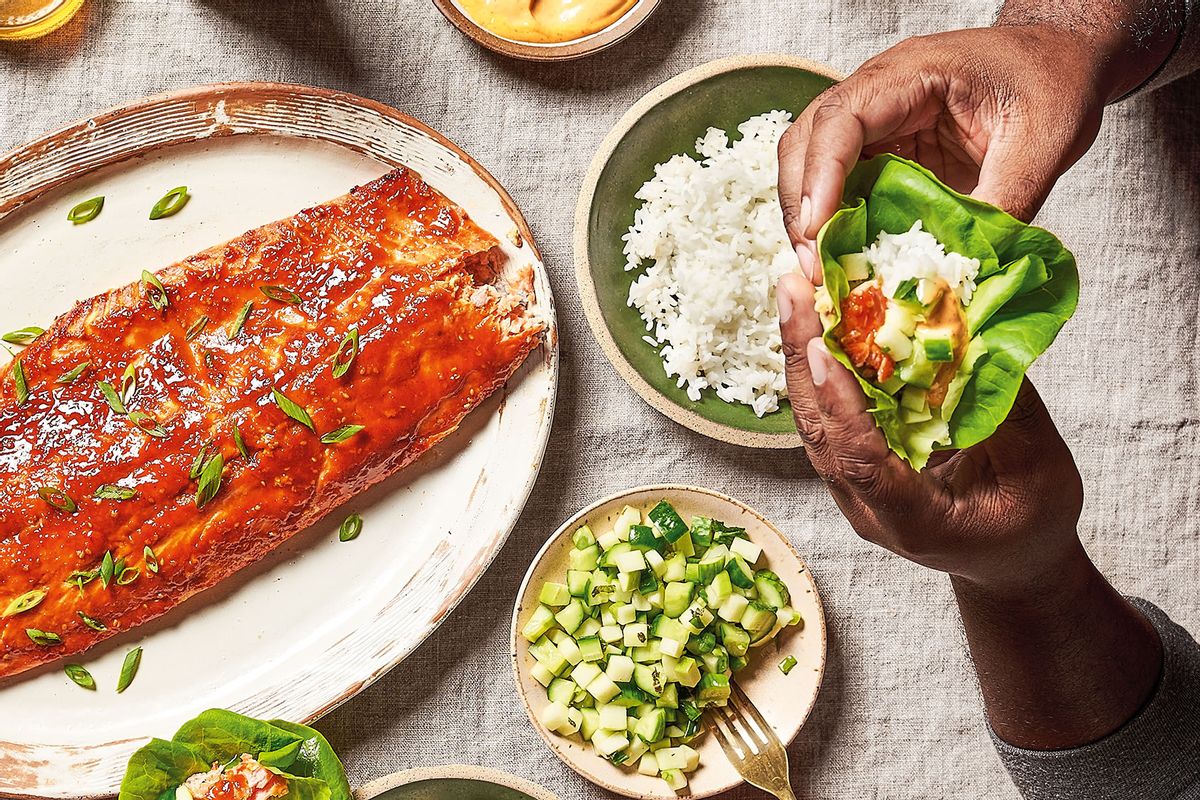While the notion of "Southern food" may automatically conjure up foods like grits, peach cobbler or pecan pie, there's a depth to what the term actually constitutes. In her new cookbook, "South of Somewhere: Recipes and Stories from My Life in South Africa, South Korea and the American South," author Dale Gray walks you through that journey.
Gray's incredibly inventive take on food — as well as her fascinating life — lead to such a uniquely researched and compiled cookbook which unites Southern food in all capacities, tracing an important line from South African to South Korea all the way to the American South.
Salon Food spoke with Gray about her upbringing, her career, her favorite foods and the importance of food, no matter where you're from — or where you wind up.
 South of Somewhere by Dale Gray (Photo courtesy of Simon Element)
South of Somewhere by Dale Gray (Photo courtesy of Simon Element)
The following interview has been lightly edited for clarity and length.
Hi Dale! I was immediately struck by the salmon ssam dish when first perusing the book and made it a few months back and it exceeded my expectations. What led to your developing a recipe like that?
The South Korean word "Ssam" means "wrapped" and refers to a dish in Korean cuisine in which, usually, leafy vegetables are used to wrap a piece of meat. During my years in South Korea, this was usually grilled pork or beef with pickled vegetable condiments or side dishes. I love those, but started serving my gochujang glazed version of a Ssam meal at dinner parties here in America because I find a beautifully prepared side of salmon to be such a showstopper! Salmon is popular and pairs well with robust flavors like gochujang, pickled cucumber and creamy sauces. Green apple seemed like it would add enough sweetness as a counterpoint to the spice of the glaze. Ssam dinners are a joyful group activity here at our house and I hope that readers will love the experience if they've never tried this style of eating before.
Your cookbook is deeply, incredibly unique. There's truly nothing else like it currently on bookshelves. It fuses such disparate cultural realms into something so cohesive and comprehensive. Can you tell me a bit more about that?
It took a lot of self-reflection and deep diving! Before the book, I was slightly unsure of how I would go about tying all of these wonderful places together, but once I started writing more about the memories that made each place special, cohesion followed. Each "south" is vastly different in terms of culture and location but I've always felt that the values in each place align. Sharing the story of my defacto Korean grandmother is no different than sharing the story of my maternal grandmother, Rose, in South Africa. I get the same feeling when I talk about the previous owner of our home, Miss Dixie, who glued a recipe for her tomato pie inside of my kitchen cabinet here in Mississippi.
Your book covers cuisine "from South African to South Korea to the American South. Beyond the "south" connector, what are the other similarities that bridge these cuisines and cultures?
I experienced a strong focus on family, group identity and really specific customs revolving around food in each south.
We need your help to stay independent
Tell me a bit about your professional and personal background. How does this book represent your life, your culture and your travels?
I consider myself to be a home cook and I'm self-taught because of a necessity to feed myself during college where I studied social work. I planned to work and live in South Africa at first, but the pull of faraway places and a recurring vision of a life somewhere else gave me the push that I needed to travel and see the world. In South Korea, I knew that I had made the right choice. I spent most of my twenties there, learning more about myself and discovering my favorite cuisine.
While I sometimes missed South Africa, celebrating my heritage by recalling stories of my life there made it easier. It was truly therapeutic to me and a very large reason why I started sharing those stories online. When my editor at Simon & Schuster, Justin Schwartz, first proposed the idea of writing a cookbook he said: "Your first book should be special. We want you to tell the stories that matter to you." This sealed the deal for me. South of Somewhere is an incredibly personal book and it is very special. It's a true reflection of my life as it has unfolded and the recipes serve to anchor the stories.
 Dale in the kitchen (Photo courtesy of Simon Element)
Dale in the kitchen (Photo courtesy of Simon Element)
Did your food career start when you launched your blog?
It did not. My blog is and has always been just for fun. My food career started a few years after creating The Daley Plate on Instagram. At first, it was partnerships with brands who loved my food photography and then it became my go-to platform for sharing recipes. I started gaining traction as a recipe developer and this eventually led to "South of Somewhere."
What are your personal favorite recipe(s) in the book?
The Farmer's Sausage, Egg and Cheese Sandwich is up there as one of the most unique recipes in the book. It takes inspiration from a spiced South African coiled sausage, boerewors and brings that unique flavor to an American audience in a very accessible way. Secondly, the Pimento Cheese Tomato Pie Galette. It's a showstopper of a recipe and one of my favorite things to make for friends.
I also love the flavors and textures of the Cornmeal-Crusted Fish with Green Tomatoes with Mississippi Comeback Sauce and the comforting Korean flavors in Marry Me Chicken Soup.
How was the experience of putting together such a unique cookbook?
I enjoyed the creative process so much! I found great joy in coming up with recipes and feeding my neighbors during the two-year-long process. Everyone's valuable feedback made the final product so much better. I'd go to bed at night thinking about what I would cook the next morning and this thought process didn't stop until the manuscript was delivered.
As a first-time author, there were more questions than answers in the beginning but it came together beautifully thanks to my incredible team. My co-writer, Susan Cheong, took my words and polished them and it was a great relief to be able to trust her with that. My very good friend, Bella Karragianidis, is a professional photographer and came to Mississippi to photograph many of the images you see in the book today. Collaborating with and learning from others in the industry was an invaluable experience.
Want more great food writing and recipes? Subscribe to Salon Food's newsletter, The Bite.
How does developing recipes for a cookbook differ from developing recipes for your blog?
I consider myself to be a very easygoing home cook. The recipes that I share on Instagram are usually dreamed up on the fly and snapped quickly before my husband and I sit down for dinner. I usually don't make them more than a few times but I am very confident in my ability to throw something together. Other home cooks appreciate the inspiration and I don't fuss too much about smaller details.
A cookbook, however, is a whole other story! While my goal was to showcase approachable recipes as well, the recipes in the book had to be fine-tuned, tested and perfected many times. I had a professional recipe tester, Ann Volkwein, for a few of the ones I needed an extra opinion on and relied heavily on friends to taste-test as well. I am very familiar with the tastes and preferences of my Instagram audience, but had to think about what a larger group of cooks might want to see in the book.
 Porch Party Shrimp (Photo courtesy of Dale Gray/Simon Element)
Porch Party Shrimp (Photo courtesy of Dale Gray/Simon Element)
What are the main lessons you'd hope readers take away from your book?
I hope that they'll be inspired to try something new or maybe find a go-to recipe that they love. My goal was to tell the stories that matter to me, with an emphasis on family and human connection. We live in a time where people are spending less time eating around a dinner table and I hope that the book reminds readers of the importance of togetherness. Good food brings people together!
If you could only pick one, is there a cuisine that you'd say is closest to your heart? Or that you most like to cook?
I'll always be a South African girl at heart, but moving away and discovering South Korean flavors allowed me to expand my horizons and experience dishes that just spark joy. My husband and I eat Korean food about 90% of the time here at home in Mississippi and wake up craving the sweet, salty, umami, spicy dishes that remind us of where we met.
Click here to purchase "South of Somewhere." Salon Food writes about stuff we think you'll like. While our editorial team independently selected these products, Salon has affiliate partnerships, so making a purchase through our links may earn us a commission.
Read more
about this topic

Shares